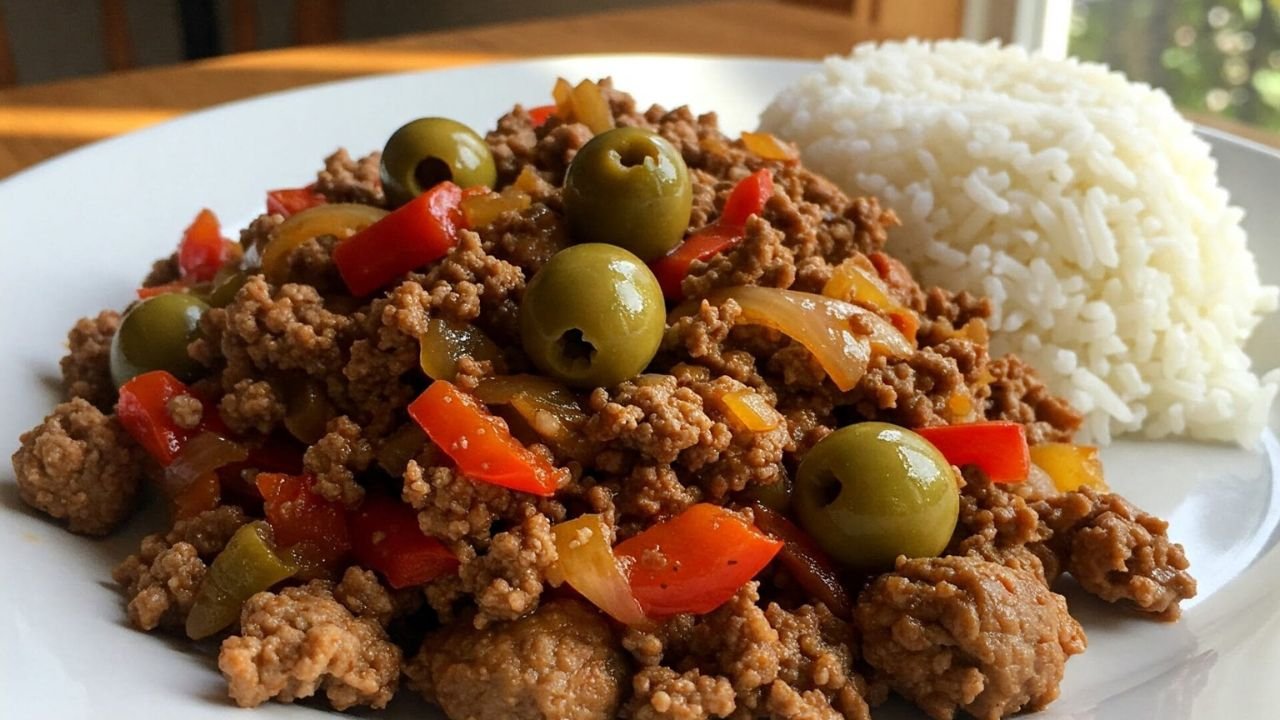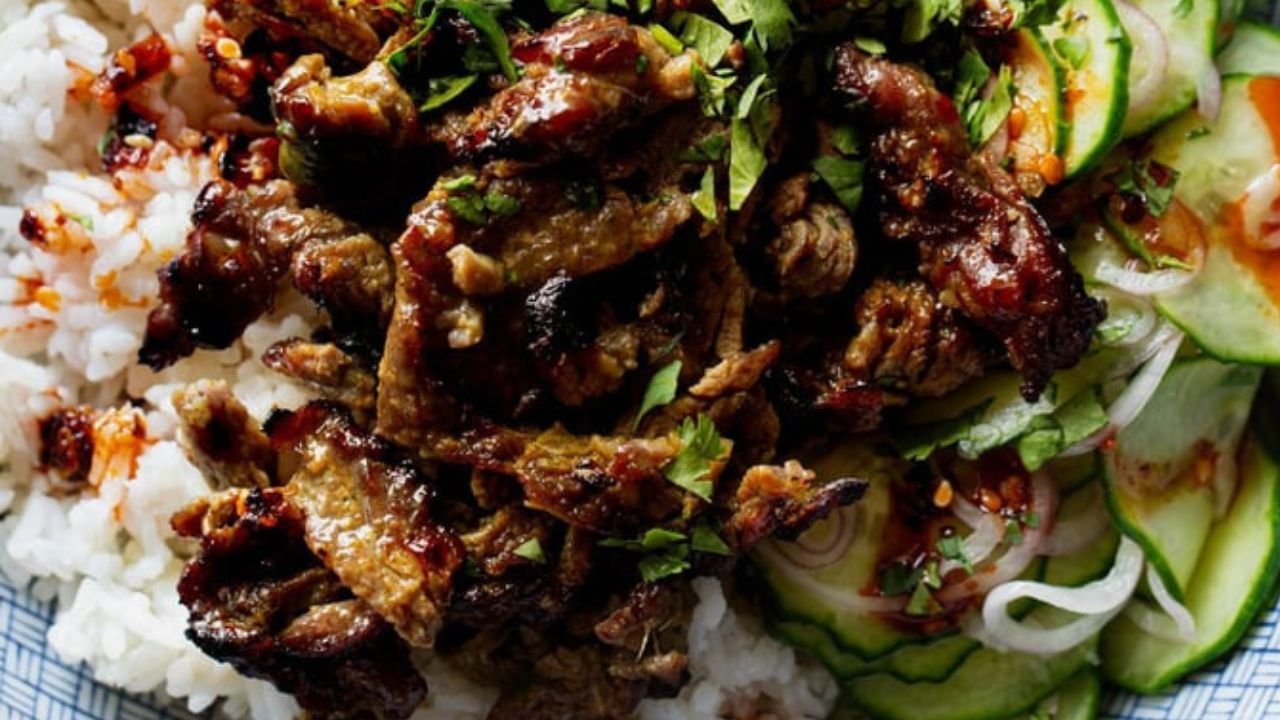Introduction
Picadillo is a traditional dish enjoyed in many Latin American countries, including Mexico, Cuba, the Philippines, and parts of Central America. Its name, derived from the Spanish verb “picar” meaning “to chop” or “to mince,” reflects its core preparation—ground meat simmered with vegetables, spices, and flavorful seasonings to create a hearty, comforting, and adaptable dish.
This stovetop version of picadillo emphasizes simplicity, rich flavors, and versatility, making it suitable for a quick weeknight dinner, a festive gathering, or meal prep. Whether served with rice, tortillas, or as a filling for tacos, empanadas, or stuffed peppers, picadillo is a beloved staple that embodies the warmth and diversity of Latin cuisine.
In this comprehensive guide, we’ll explore everything you need to know about stovetop picadillo—from its history and regional variations to detailed recipes, tips for perfect execution, ideas for customization, and nutritional insights.
The Origins and Cultural Significance of Picadillo
Historical Background
Picadillo has roots in Spanish cuisine, dating back to colonial times, where similar minced meat dishes were common. As Spanish colonists and explorers settled in Latin America and the Philippines, they brought their culinary traditions with them, which blended with native ingredients, resulting in regional variations of picadillo.
In Mexico, picadillo is a household staple, often flavored with tomatoes, olives, raisins, and spices, reflecting a balance of savory, sweet, and tangy flavors. In Cuba, it’s commonly seasoned with cumin, garlic, and olives, sometimes including potatoes or plantains. In the Philippines, the dish is called “giniling” and features ground pork or beef with potatoes, peas, and sometimes raisins or pickles.
Cultural Importance
Picadillo is more than just a dish; it’s a cultural symbol of resourcefulness, comfort, and family. Its ingredients are affordable and accessible, and its versatility allows it to be adapted to various tastes and available ingredients. It’s often served during special occasions, family dinners, or as a quick everyday meal.
Ingredients and Their Roles
Core Components
- Ground Meat
- Types: Beef, pork, chicken, or turkey. Beef and pork are most traditional.
- Preparation: Typically browned in the skillet to develop flavor and texture.
- Tip: For a richer taste, use fatty cuts or add a little oil or butter during cooking.
- Vegetables
- Onions and Garlic: Aromatics that build the flavor base.
- Tomatoes: Fresh or canned, providing moisture, acidity, and flavor.
- Potatoes: Optional, adding heartiness and substance.
- Peas: For sweetness and color.
- Carrots, Bell Peppers, or Corn: Additional vegetables for texture and flavor.
- Fruits and Olives
- Raisins or Dried Fruit: Adds sweetness.
- Green or Black Olives: Briny, salty flavor.
- Capers: Occasionally used for a tangy punch.
- Herbs and Spices
- Cumin: A signature spice in many Latin recipes.
- Oregano: Dried or fresh.
- Bay Leaves: For depth.
- Cilantro: Fresh, for garnish and flavor.
- Chili Powder or Cayenne: For heat, optional.
- Liquids
- Tomato Sauce or Paste: For richness.
- Broth or Water: To simmer and develop flavors.
- Vinegar or Lime Juice: For acidity and brightness.
Additional Flavorings
- Sweet ingredients: Raisins, dried apricots, or plantains.
- Savory ingredients: Hard-boiled eggs or cheese (in some regional recipes).
Equipment Needed
- Large skillet or sauté pan
- Wooden spoon or spatula
- Cutting board and knife
- Measuring cups and spoons
- Optional: Grater (for potatoes or vegetables)
Step-by-Step Recipe for Stovetop Picadillo
1. Preparing the Ingredients
- Meat: If not pre-ground, grind or finely chop meat.
- Vegetables: Dice onions, garlic, tomatoes, potatoes, and other vegetables.
- Fruits: Rinse olives and raisins.
- Herbs/Spices: Measure out spices and prepare fresh herbs.
2. Cooking the Meat
- Heat a tablespoon of oil in a large skillet over medium heat.
- Add the ground meat, breaking it apart with a spoon.
- Season with salt and pepper.
- Cook until browned and cooked through, about 8-10 minutes.
- Remove excess fat if necessary, but leave enough to develop flavor.
3. Building the Flavor Base
- Add diced onions and garlic to the skillet.
- Sauté until fragrant and translucent, about 3-5 minutes.
- If using, add diced tomatoes and cook for another 5 minutes until soft and saucy.
4. Incorporating Vegetables and Fruits
- Add diced potatoes, carrots, or bell peppers.
- Pour in tomato sauce or paste, stirring to coat ingredients.
- Pour in broth or water to create a simmering sauce.
- Stir in raisins and olives.
5. Simmering
- Add bay leaves, cumin, oregano, and any other spices.
- Lower the heat to medium-low.
- Cover partially and simmer for 20-30 minutes, stirring occasionally.
- Check for doneness; potatoes should be tender, flavors melded, and sauce thickened.
6. Final Touches
- Remove bay leaves.
- Stir in chopped cilantro or parsley.
- Adjust seasoning with salt, pepper, or acidity (vinegar/lime juice).
- Serve hot over rice, with tortillas, or as filling for tacos or empanadas.
Tips for Perfect Picadillo
- Use fresh ingredients for the best flavor.
- Adjust the texture: For a chunkier version, leave some vegetables in larger pieces; for a smoother sauce, mash some potatoes or blend part of the sauce.
- Sweet and savory balance: Adjust raisins and olives to taste—more raisins for sweetness, more olives for saltiness.
- Flavor depth: Toast spices briefly before adding to enhance their aroma.
- Control the salt: Olives and broth can be salty; taste and adjust accordingly.
- Add heat: Incorporate chili flakes or hot sauce if you like spicy.
Regional Variations of Picadillo
Mexican Picadillo
- Usually includes diced potatoes, peas, carrots, and sometimes green beans.
- Flavored with cumin, oregano, and cinnamon.
- Often includes chopped tomatoes, raisins, and olives.
- Served with rice, as tacos, or with plantains.
Cuban Picadillo
- Typically includes ground beef, tomatoes, olives, raisins, and capers.
- Flavored with cumin, garlic, and sometimes cinnamon.
- Served with rice and black beans or as a filling for pastelitos.
Filipino Giniling
- Uses ground pork or beef.
- Includes potatoes, green peas, carrots, sometimes bell peppers.
- Flavored with soy sauce, fish sauce, and sometimes achuete (annatto) for color.
- Served with rice or as part of a vegetable stew.
Central American Variations
- May include diced plantains, corn, or other regional ingredients.
- Spiced differently, with local herbs and seasonings.
Serving Suggestions and Pairings
- Over rice: White, brown, or yellow rice.
- With tortillas or empanadas: As a filling.
- As a topping: For nachos or baked potatoes.
- With plantains: Fried or baked for a sweet contrast.
- With vegetables: Sautéed greens or a fresh salad.
Garnishes
- Fresh cilantro
- Sliced avocado
- Lime wedges
- Crumbled cheese
Nutritional Insights
Picadillo is a protein-rich dish with a good mix of vegetables. Its nutritional content varies depending on ingredients, but general considerations include:
| Nutrient | Approximate per serving (1 cup) |
|---|---|
| Calories | 250-400 kcal |
| Protein | 15-25 grams |
| Carbohydrates | 20-40 grams |
| Fat | 10-20 grams |
| Fiber | 3-6 grams |
| Sodium | Moderate to high, depending on added salt and olives |
Health tips:
- Use lean meats to reduce saturated fat.
- Incorporate extra vegetables for fiber.
- Rinse olives and capers to control sodium.
- Serve with whole grains for added nutrients.
Storage and Reheating
- Refrigerate in airtight containers for up to 4 days.
- Freeze in portions for up to 3 months.
- Reheat on stovetop or microwave until steaming hot.
- Tip: Add a splash of water or broth when reheating to restore moisture.
Variations and Customizations
- Vegetarian version: Use lentils, tofu, or textured vegetable protein (TVP).
- Low-sodium: Use rinsed olives and low-sodium broth.
- Spicy: Add hot sauce, chili flakes, or diced jalapeños.
- Sweet: Increase raisins, dried apricots, or add chopped plantains.
Final Thoughts
Stovetop picadillo is a versatile, flavorful, and comforting dish that reflects the rich culinary traditions of Latin America and beyond. Its adaptability makes it suitable for a variety of dietary preferences and ingredient availability. Whether you serve it over rice, use it as a filling, or enjoy it as a standalone entrée, picadillo is a testament to the beauty of simple, wholesome ingredients cooked with care.
Summary of Key Points
- Origin: Latin American and Spanish colonial roots.
- Main ingredients: Ground meat, vegetables, olives, raisins, spices.
- Cooking method: Sauté meat, build flavor base, simmer with liquids and seasonings.
- Variations: Mexican, Cuban, Filipino, regional tweaks.
- Serving: Over rice, in tacos, with plantains, or as a filling.
- Health tips: Use lean meat, add vegetables, control sodium.
- Storage: Refrigerate for 4 days, freeze for longer.




